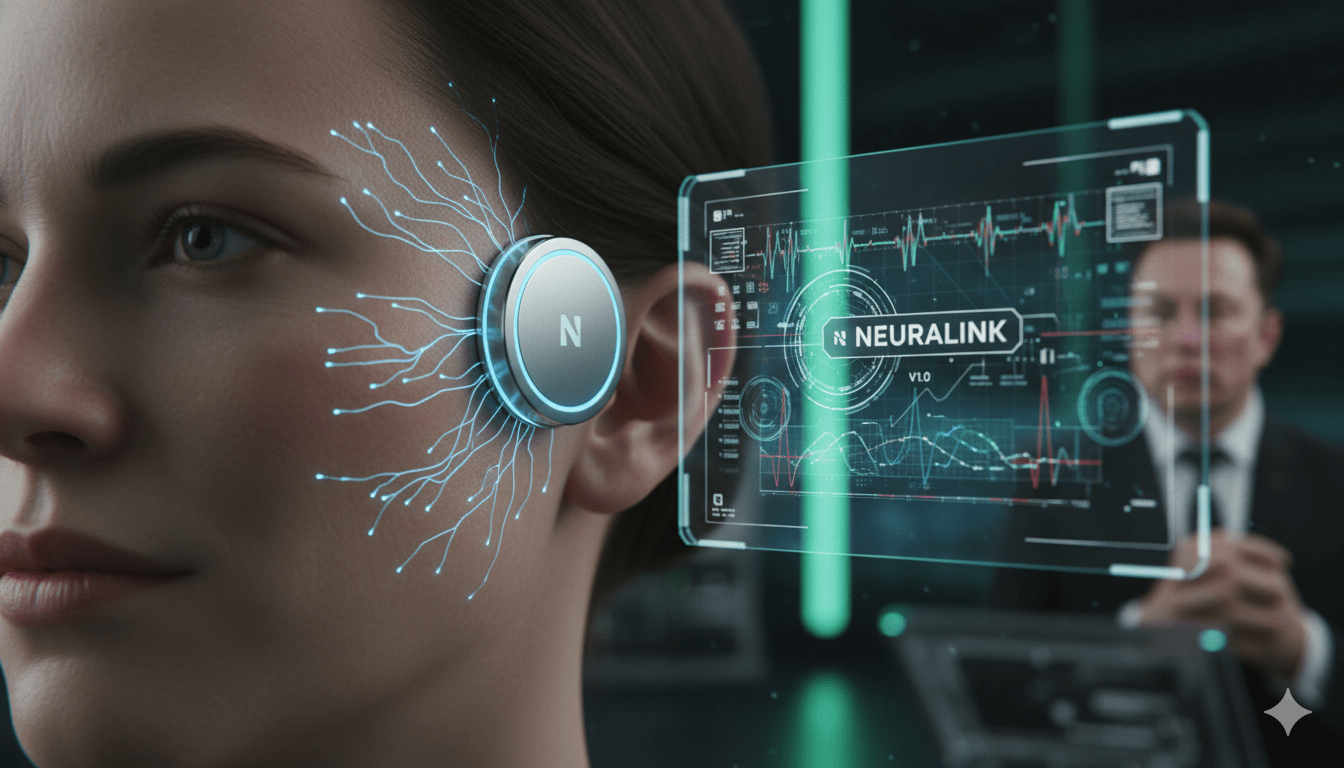Elon Musk’s ambitious brain implant company, Neuralink, has reached a significant milestone. The company recently submitted a scientific paper to a prestigious journal. This submission details the results from some of its patients, marking Neuralink’s first peer-reviewed Neuralink human data publication. This represents a crucial step forward for the firm and the broader field of brain-computer interfaces.
The paper was sent specifically to the New England Journal of Medicine. It offers a detailed account of the initial three patients who received the Neuralink device. Importantly, the submission includes comprehensive safety data from these early trials. Michael Lawton, the chief executive officer and president of the Barrow Neurological Institute, confirmed these details. The Barrow Neurological Institute is a recognized clinical trial site for Neuralink.
Understanding Brain-Computer Interfaces and Neuralink’s Role
Neuralink operates within the cutting-edge domain of brain-computer interfaces (BCIs). These innovative technologies aim to establish direct communication pathways between the brain and electronic devices. Such interfaces hold immense potential. They could revolutionize how humans interact with technology and address various neurological conditions. Neuralink is one of several companies actively developing these advanced solutions.
The company has attracted substantial investment, reflecting the high hopes placed on its technology. Neuralink has successfully raised more than $1 billion in funding. Its most recent fundraising round valued the company at an impressive $9 billion. Despite this significant financial backing and public attention, Neuralink had not previously published peer-reviewed human data. This latest submission fills that critical gap.
The absence of peer-reviewed human data had been a point of discussion among external scientists. Such results are vital for independent evaluation. They allow the wider scientific community to assess the efficacy and safety of Neuralink’s devices. The submission to the New England Journal of Medicine provides this much-needed transparency. It offers a foundation for rigorous scientific scrutiny.
Neuralink’s celebrity founder, Elon Musk, has undeniably amplified interest in the BCI field. His involvement has drawn increased attention and investment. This, in turn, has accelerated research and development efforts across numerous companies. While Neuralink has garnered significant media focus, other businesses and academic institutions have also published widely in this complex area.
Insights from the Conference and Future Ambitions
Michael Lawton provided these insights during a conversation. This discussion took place on the sidelines of a brain-implant conference held in New York. The Mount Sinai Health System hosted this important event. While Lawton shared key details about the paper’s submission, he declined to elaborate further on its specific contents. Neuralink itself did not respond to requests for comment regarding the publication.
The company has previously disclosed that it has implanted its device in 12 people to date. This indicates ongoing progress in their clinical trials. Looking ahead, Neuralink’s president, DJ Seo, made a notable statement in September. He expressed the company’s aspiration to implant its device in a healthy person by the year 2030. This ambitious goal highlights their long-term vision.
Currently, brain devices that patients utilize to control computers are primarily experimental. They have only been implanted in patients facing severe medical needs. This cautious approach ensures patient safety and addresses critical health challenges first. Neuralink’s current focus aligns with this standard medical practice.

Lawton further elaborated on Neuralink’s expansive vision during a panel discussion. Bloomberg News moderated this session at the conference. He stated that Neuralink has “a vision to apply a link to just about anybody who could have a possible need for it.” This suggests a future where BCI technology could assist a much broader population, extending beyond severe medical conditions.
However, Lawton also emphasized that reaching this broader application in healthy individuals is “a long way” off. He noted the company’s meticulous approach. “They’ve been very meticulous about focusing on diseased patients with disability,” Lawton explained. This reiterates Neuralink’s commitment to addressing urgent medical needs before widespread commercialization.
Neuralink’s Aggressive Growth Targets and Diverse Projects
Beyond its immediate research and development, Neuralink has set ambitious long-term objectives. The company aims to significantly scale its operations. Its goal is to implant its chips in an impressive 20,000 people per year by 2031. This target underscores a belief in the technology’s eventual widespread adoption and impact.

Alongside this scaling of implants, Neuralink projects substantial financial growth. The company anticipates generating at least $1 billion in annual revenue. These financial targets illustrate the potential economic impact of successful BCI development. They also reflect the confidence investors place in Neuralink’s innovative approach.
Neuralink’s research extends beyond devices designed to help people control computers. The company is actively pursuing several other groundbreaking projects. These include developing chips specifically engineered to restore vision. Another area of focus is creating technology that can read speech directly from the brain. Furthermore, Neuralink is working on solutions to treat debilitating conditions like Parkinson’s disease. These diverse initiatives demonstrate the breadth of their scientific exploration and their commitment to improving human health and capabilities.
The submission of Neuralink’s first peer-reviewed human data publication marks a pivotal moment. It signals a new phase of transparency and scientific validation for the company. As the BCI field continues to evolve, this step will undoubtedly contribute to a deeper understanding of brain implant technology. It also paves the way for future advancements and broader applications that could transform lives.

